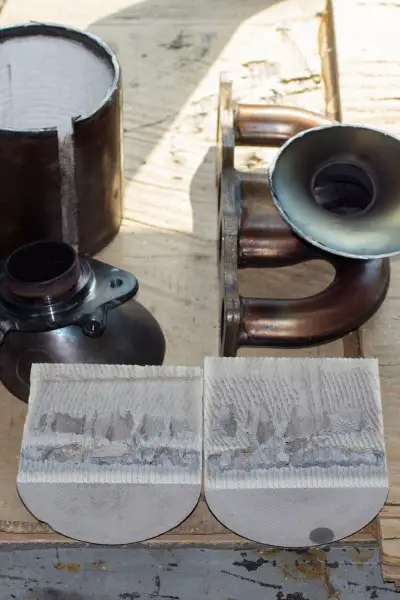As a car owner, I understand the importance of keeping my vehicle in good condition. One of the components that play a vital role in the car’s performance is the catalytic converter.
It is responsible for reducing the harmful emissions produced by the engine. Over time, the catalytic converter can become clogged with carbon deposits, which can lead to a drop in performance and even cause the car to fail an emissions test.
Many car owners wonder if they can clean their catalytic converter to restore its performance. The answer is yes, you can clean a catalytic converter, but it depends on the severity of the clogging and the cleaning method used. There are different ways to clean a catalytic converter, and some methods are more effective than others.
In this article, I will explore the different methods of cleaning a catalytic converter and help you determine if it’s something you can do yourself or if you need to take your car to a professional mechanic.
Why Clean a Catalytic Converter?

When it comes to keeping your car in good shape, there are many things you can do, including regular maintenance, oil changes, and tire rotations.
But one thing that often gets overlooked is cleaning the catalytic converter. Cleaning your catalytic converter can help improve your car’s performance and fuel efficiency.
Over time, the converter can become clogged with debris, which can cause it to work less efficiently. This can lead to reduced fuel economy and poor performance.
In addition to improving fuel efficiency and performance, cleaning your catalytic converter can also help reduce harmful emissions.
The converter is responsible for reducing the number of pollutants that are released into the air. If it becomes clogged, it can’t do its job effectively, which can lead to increased pollution.
Cleaning your catalytic converter is also a more cost-effective solution than replacing it. A new converter can be expensive, so cleaning it can help you save money in the long run.
Overall, cleaning your catalytic converter is an important part of car maintenance that shouldn’t be overlooked. It can help improve your car’s performance, and fuel efficiency, and reduce harmful emissions.

Use code FWISE to get 5% off
How to Clean a Catalytic Converter?
If you have a clogged or dirty catalytic converter, you may notice that your car is not running as smoothly as it should.
Cleaning the catalytic converter can help improve your car’s performance and fuel efficiency. Here are the steps to clean a catalytic converter:
READ ALSO: Do Catalytic Converter Shields Actually Work? Find Out Here
Step 1: Remove the Catalytic Converter
The first step to cleaning a catalytic converter is to remove it from your car. This can be a challenging task, so it’s important to follow the instructions carefully.
You may need to use special tools or equipment to remove the catalytic converter, so be sure to have everything you need before you start.
Step 2: Soak the Catalytic Converter in a Cleaning Solution
Once you have removed the catalytic converter, you will need to soak it in a cleaning solution. There are many different types of cleaning solutions available, so be sure to choose one that is specifically designed for cleaning catalytic converters.
Follow the instructions on the cleaning solution carefully, and be sure to wear protective gloves and eyewear while you work.
Step 3: Rinse the Catalytic Converter
After soaking the catalytic converter in the cleaning solution, you will need to rinse it thoroughly with water.
Be sure to remove all traces of the cleaning solution, as any residue left behind could damage your car’s engine. Use a hose or pressure washer to rinse the catalytic converter thoroughly.
Step 4: Dry the Catalytic Converter
Once you have rinsed the catalytic converter, you will need to dry it thoroughly before reinstalling it in your car.
Use a clean, dry cloth to remove any excess water, and then allow the catalytic converter to air dry completely. Do not use any heat sources to dry the catalytic converter, as this could damage it.
Step 5: Reinstall the Catalytic Converter
Finally, you can reinstall the catalytic converter in your car. Be sure to follow the instructions carefully, and use any special tools or equipment that are required.
Once the catalytic converter is securely in place, start your car and check for any signs of improvement in performance or fuel efficiency.
Cleaning a catalytic converter can be a challenging task, but it’s an important part of maintaining your car’s performance and efficiency.
By following these steps carefully, you can clean your catalytic converter safely and effectively.
READ NEXT: What to do if Your Catalytic Converter Gets Stolen?
When to Clean a Catalytic Converter?

If you are experiencing poor performance in your vehicle, it may be time to clean your catalytic converter. A clogged or dirty converter can cause your car to have reduced acceleration and gas mileage.
It can also cause your car to produce a strong odor, and you may hear a rattling sound coming from the converter.
One of the most common reasons for a clogged converter is the buildup of carbon deposits. This can happen if you frequently drive in stop-and-go traffic or if you use low-quality gasoline.
If you notice any of the symptoms mentioned above, it is best to have your converter inspected by a licensed mechanic.
It is important to note that cleaning your catalytic converter should not be your first course of action. In some cases, the converter may be damaged or too clogged to be effectively cleaned. In these situations, it may be necessary to replace the converter entirely.
If you do decide to clean your converter, there are a few methods available. One option is to use a catalytic converter cleaner, which can be found at most auto parts stores.
These cleaners are designed to dissolve carbon deposits and other buildups inside the converter. Another method is to remove the converter and clean it manually using water and lacquer thinner.
RELATED: Can a Bad Catalytic Converter Shut Off Your Car? (Explained)
Can You Clean a Catalytic Converter Yourself?

Cleaning a catalytic converter yourself is possible, but it depends on the severity of the issue. If the converter is only slightly clogged, cleaning it yourself might be an option.
One way to clean a catalytic converter is by using a catalytic converter cleaner product. These products are designed to help break down the carbon deposits that build up in the converter over time.
Simply pour the cleaner into your gas tank and drive your car as you normally would. Another option is to remove the catalytic converter and clean it manually.
This involves soaking the converter in a mixture of water and lacquers thinner to dissolve the carbon build-up. However, this method is more complicated and requires more time and effort.
It’s important to note that cleaning a catalytic converter may not always solve the problem. If the converter is damaged or too clogged, it may need to be replaced.
It’s best to consult with a professional mechanic to determine the best course of action. In summary, cleaning a catalytic converter yourself is possible, but it’s important to assess the severity of the issue and determine if cleaning is the best solution. If you’re unsure, it’s always best to consult with a professional mechanic.

Jack is the owner, chief editor, and senior writer of this website.
Machinery, engines, and farming have always been a passion of his since he was a young boy. Growing up on a small farm in rural America, he learned the value of hard work and dedication from an early age.
After completing his degree in Engineering, he decided to follow his dream and became a farmer in 2009.
Since then, he has gained a wealth of knowledge and experience in the field. He has grown a variety of crops, tended to farm animals, and worked with all sorts of farming machinery. Continue reading…




